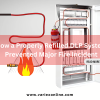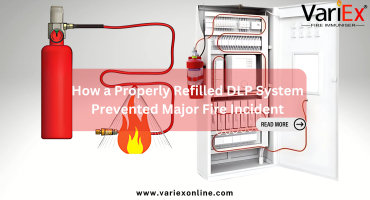![]()
Fire Immuniser
+91-7829629111
Email: info@variex.in
Varistor Technologies Pvt. Ltd.
Block-1, First Floor, Ardente Office One, Hoodi Circle, ITPL Main Road, Bengaluru, Karnataka 560048, IN
What Is Fire Alarm Module
What Is Fire Alarm Module
Fire safety has always been a significant concern in residential, commercial, and industrial buildings. One of the most crucial elements of a robust fire safety system is the Fire Alarm Module. This article aims to provide a comprehensive overview of what a Fire Alarm Module is, the components it comprises, how it operates, and the critical role it plays in maintaining building safety and prevention of fire accidents.
Understanding What Fire Alarm Module Is
A Fire Alarm Module is part of a comprehensive fire safety system designed to detect and alert building occupants of the presence of smoke or heat that could signify a potential fire. It plays an indispensable role in any building's security system by identifying any abnormalities related to fire quickly and alerting the relevant people or systems for immediate action. This system could be manual, automatic, or a combination of both, depending on the complexity and requirements of the building's safety protocol.
Components of a Fire Alarm Module
A complete Fire Alarm Module system incorporates several components that work in tandem to detect, alert, and combat potential fire threats. It typically includes elements like heat detectors, smoke detectors, manual pull stations, sirens or horns, flashing lights, control panel, and communication interface.
The heat and smoke detectors are the front-line components that detect fire-related abnormalities. In contrast, the manual pull stations provide the occupants the ability to initiate an alarm manually. Horns and flashing lights then alert the occupants about the detected danger. The control panel serves as the brain of the system, where it processes signals from other components and initiates suitable reactions, such as sounding the alarms or notifying the fire department. Lastly, the communication interface allows seamless communication between the system and monitoring services.
The Mechanics Behind the Fire Alarm Module
The Fire Alarm Module operates through an intricate mix of electrical engineering and computer science. The detectors continuously survey the building for abnormal heat or smoke levels, indicative of a potential fire. Once any detector senses danger, it sends an electrical signal to the control panel. The control panel then processes the information, verifies the alarm, and activates the notification appliances like sirens, horns, and flashing lights. Simultaneously, it might also communicate the emergency to the fire department or a central monitoring station.
The Role of Fire Alarm Module in Building Safety
The Fire Alarm Module plays a crucial role in maintaining the safety and integrity of a building and its occupants. Its primary purpose is to provide early warning of a potential fire, enabling occupants to evacuate safely and promptly. By alerting the fire department or a monitoring service quickly, the system enables immediate intervention and helps minimize damage.
Besides safeguarding lives, the Fire Alarm Module also plays a significant role in protecting property. By facilitating early detection, the system prevents minor fire occurrences from escalating into significant property damage. Additionally, it provides valuable time for measures to be adopted, such as automatic sprinkler activation or local firefighting operations, that can suppress or contain the fire.
Types of Fire Alarm Modules
There are two primary types of Fire Alarm Modules – conventional and addressable. Conventional systems are hard-wired and work by dividing the building into several designated zones. If a component within a zone gets triggered, the control panel identifies the zone but cannot pinpoint the exact device activated.
On the other hand, addressable systems are intelligent setups where each device has a unique address. If a component sends an alarm to the control panel, the system can identify the exact location and device that triggered the alarm. This system provides faster response times and allows for more detailed incident reporting.
Conclusion
In conclusion, the Fire Alarm Module, with its array of detectors, alarms, and control systems, serves as an indispensable safety net against potential fire threats in any building. Its contribution to safeguarding both human lives and property cannot be overstated. By providing early detection and notification, the system offers valuable time for evacuation and firefighting measures, ultimately preventing minor incidents from escalating into potentially catastrophic events. As technology continues to evolve, Fire Alarm Modules are bound to become even more advanced and efficient, ensuring a safer environment in our homes and workplaces.
Final Say
At VariEx.in and VariexOnline.com, we specialize in supplying and installing top-quality fire fighting systems and equipment. From fire extinguishers to advanced suppression systems, we offer comprehensive solutions tailored to your needs. Our experienced team ensures precise installation and maintenance for optimal safety.
Trust VariEx for reliable fire protection. Contact us online or call 7829629111 to learn more.
"WHAT YOU CAN READ NEXT"
 Read more +24 November 2023 in Fire Extinguisher
Read more +24 November 2023 in Fire ExtinguisherWhat types of fire extinguishers are available for different fire classes?
 Read more +28 April 2025 in Fire Suppression
Read more +28 April 2025 in Fire SuppressionFire Suppression Refilling Checklist for Facility Managers
 Read more +25 April 2025 in Fire Suppression
Read more +25 April 2025 in Fire Suppression





